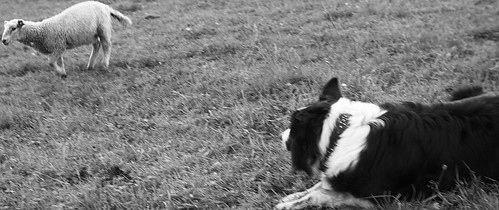The food we are eating gets an identity when you are enjoying a delicious meal, you know where it comes from and the way it has been produced did not harm nature. The first activity in the newly established Slow Asker og Bærum convivium tried to include Slow Food’s three interconnected principles: good, clean and fair.The first activity consisted of visiting the food producers Øverland community garden and Persbråten farm and eating vegetables and meat produced by them at the restaurant Hos Oss. The meal which we ate at the restaurant Hos Oss at Stabekk was the Norwegian national dish called får-i-kål, literally sheep in cabbage, consisting of mutton, potatoes and wild cabbage.
Visiting the food producers just before arriving at the restaurant, was really a way of getting a feeling of where the food we are eating is coming from and how it is produced. Øverland community garden was the first of its kind in Norway and it is also the largest where 300 part owners are cultivating a large selection of vegetables and herbs. The organically grown potatoes of the Norwegian variety Beate were harvested the day before the activity. The mutton for our dinner had been slaughtered and butchered a few days before the dinner, hung up for making it tender, before transporting it to the restaurant. During our visit to Persbråten farm, we met the sheep farmer and talked to him about raising his animals and watching his shepherd dogs herding some of his sheep and the cultural landscape surrounding his farm, a pleasant sight, indeed.Visiting the food producers who made the ingredients of our meal helped to give the food an identity. Since all of the participants were town dwellers, visiting a lovely place near to where they lived, but didn’t know about, gave an added dimension to a fine undertaking.
The owners of the restaurant Hos Oss had discovered a new source of high quality meat and got information about an organic community garden located nearby.This activity was a contribution to creating a connection between local food producers and consumers in order to create the delicious food experiences. The cook Arne Brimi, who is famous in Norway, at least, uses to say: it’s about creating identity, credibility and making expectations toward the meal to be served.

